Trouble Understanding What You Read? Part One
December 9th, 2008But what about an answer if the reading problem is #3 (lack of language or vocabulary)?
Writes J. K.
Remember, there are 3 roadblocks to reading success. The third problem, lack of vocabulary or language can be addressed in a variety of ways. First, a recap on the 3 roadblocks:
3 Most Common Reading Roadblocks
(whether your child is dyslexic, has an identified learning disability, is ADD/ADHD, is homeschooled, is falling through the cracks at school, or is gifted)
1. The problem is phonetic related, where a child jumbles or mispronounces the words as they are trying to decode (the ability to sound out printed words) or encode (the ability to put letters to the sounds that make up a word). You have no idea what the word is that they are trying to read until you look at it yourself.
2. The problem is a reading fluency/visual tracking problem where it takes them what seems like forever to read the sentence or they have skipped, omitted, or repeated words when reading.
3. The problem is a lack of language or vocabulary, which hinders comprehension or understanding what you read.
There are two solutions to this 2nd roadblock: lack of language or vocabulary. I just wrote this article a short time ago. It addresses the first solution to improving lack of language and vocabulary through note taking.
Improve Language and Vocabulary Through Note Taking Using Graphic Organizerrs
What does writing have to do with reading? Every week or two your child comes home with a writing assignment of some sort that is related to reading. Or, if you are homeschooling, you are giving a writing assignment to your child. First they have to read a selection and then they need to write something from the selection, whether it is short answers to questions, a paragraph summary, or a full-fledged report. They actually had to understand what they read, the vocabulary and language of it e.g.: new vocabulary words, science terms, or social studies facts. Being able to pull out the important information of what you read, understanding what you read, is directly related to being able to write with ease.
It doesn’t matter if a child has dyslexia, a learning disability, is ADHD, or is even gifted. Understanding what you read, reading comprehension, is HARD for many children. And to have to write about what they have read, it’s even harder! For them it is like having their teeth pulled without the Novocain. My own kids’ reaction to any writing assignment was to stare at blank sheets of paper, totally frozen, not knowing what to write.
You know that to have accurate comprehension, you need to be able to utilize the information that you read. And, you need to be able to communicate with others about what you read. One of the ways to do this is to be able to write about what you have read.
So, after years of trial and error, attending numerous seminars, and research from the National Reading Panel, I realized the solution was to use graphic organizers.
When my students had writing assignments, they brought in the notes they had done at school. Their notes were done with a webbing method. The webbing method of note taking uses the size of circles to indicate the importance of ideas and connecting lines to indicate relationships. Typically the main topic is in the center with a large circle. Then important supporting ideas have slightly smaller circles and the less important ideas have the smallest circles. Lines from one circle to another indicate that the concepts in the connected circles are related in some way.
The problem was that although those students could do the webbing assignment while in class, even using the new vocabulary words, when they went to actually use the web format to write from, they were stuck, frozen again. This was because their notes were all over the place – coming out in many circles just like a spider web. They couldn’t get focused on what was important and what the connections were.
I knew there had to be a better way for my kids to be able to take notes and then actually be able to utilize them. So I developed numerous fill-in-the-blank note taking, paragraph writing, and essay writing forms that were designed with the end use in mind. My students would be able to not only take the notes, but they would also be able to use their notes to write a paragraph or essay from them. Now they didn’t have to stare at blank sheets of paper. They would be able to pull out the important information from what they read and then fill-in-the-blanks of the graphic organizerrs. Their stress level came down, and they were able to write for the first time, and actually be successful! I compiled these forms in the book Ten Minutes to Better Study Skills.
Whether you are homeschooling or not, NOW you have the opportunity to make your child’s writing assignments easy for them. They don’t need to sweat and struggle through another writing assignment. You don’t have to sweat and struggle through your child’s writing assignments any longer either!
To read more about Ten Minutes to Better Study Skills, go to www.bonnieterrylearning.com and click on books or to get a special price, click on The Readiing Pack.
To keep the length of the post to a minimum, I’ll post the second solution in another post.
Bonnie Terry, M. Ed., BCET Board Certified Educational Therapist #10167
P.S.:
If you haven’t signed up for the FREE homework & teaching tips, go to the upper right hand and sign up! Be sure to pass this link along to anyone you think may be interested. Thanks!







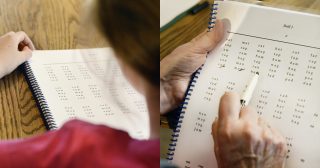









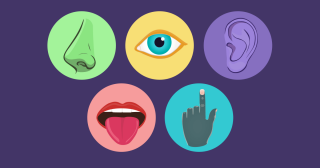








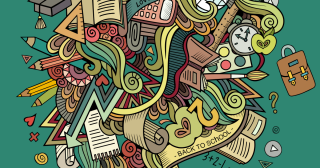



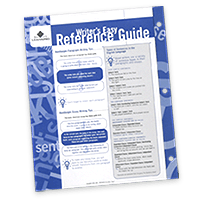

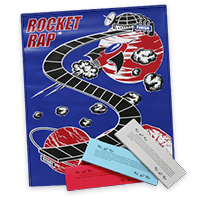

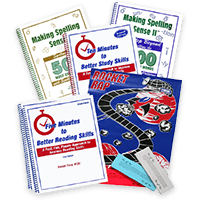
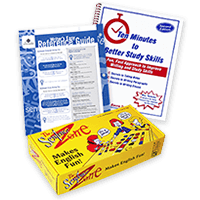











just gonna phrase hello…